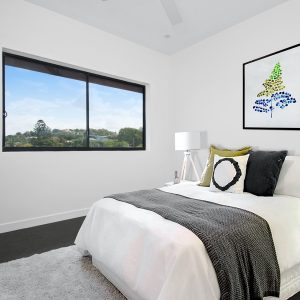Whether your welding takes you on an essential oil rig or in a mechanic’s garage, you require the proper security for your eyeballs in each and every work place. A lot of welders realize that if they spend a bit more in their headgear, it will make a big difference in comfort and general welding potential, whilst helping have better safety.
Nevertheless, welding safety helmets come in numerous types of price ranges and they are designed for various apps. Listed here are 5 crucial things to consider to take into account when picking a welding head protection.
1. Will I Require a Single Repaired Shade or Variable Hue Camera lens?
An ordinary welding headgear, also sometimes termed as a unaggressive welding headgear, comes with a watching camera lens having a static ultraviolet (UV) and infrared (IR) filter, commonly a #10 hue. This filter offers the same level of security regardless of how many amps light produces through the weld.
Each time a welder is ready to function, he should reduce these kinds of helmet having a speedy nod or snap of the neck area to flip the helmet downward whilst keeping the torch in position. When work is comprehensive, the welder must elevate the head protection to find out.
When common headgear with fixed contact lenses tend to be less costly, they may have some negatives. For the inexperienced welder, it may take some practice to hold the torch steady and also in the right spot after snapping the welding helmet into place. Also, if you’re welding inside a restricted area or limited room, there isn’t always place to move or perhaps to flick a headgear up or down. decreasing and Raising a headgear also adds to your work time, which may have an impact on productivity.
If you’re always utilizing the same method at the fixed amperage, then there’s really no reason to get anything at all over a fixed shade #10 common helmet, if the majority of your welding duties only include one particular type of material, at the exact same size, and.

Know the Regular for Welding Safety helmets ANSI Z87.1-2003
The newest safety standard for welding headwear is ANSI Z87.1 – 2003. These common demands head protection and car-darkening lens suppliers to demonstrate from laboratory testing that they may confirm headgear requirements for example transitioning speeds and darkness shade settings. So always wear the right protective equipment.
Not all welding headgear on the market today satisfy the present protection standard, which is a vital factor to find when choosing a welding helmet. Make sure that the headgear packing is noted specifically for ANSI Z87.1 – 2003 or Z87+ which proves the headgear has got the most up-to-date authorization of the American Countrywide Specifications Institute and Culture of Security Designers. If all that you see is “ANSI Approved” it doesn’t assure it passed the 2003 standard.
Variable Shade welding headwear attribute auto-darkening filtration systems with an digital filter lens. An automobile-darkening filtering or ADF, can be a water crystal exhibit that features lighting devices fitted nearby the lens to find the welding arc. Once the zoom lens is just not activated, the LCD filter will most often have a #3 or 4 tone, much like sun glasses so it’s easy to see with all the head protection set up.
When a welding arc begins, sensors in the head protection will darken the lenses to a shade from #9 to #13. The benefit of this helmet is that it can remain in position before starting operate enabling you to set up a welding joint with the headgear in place. You can even keep your head protection in place for the size of the process, without having raising or lowering necessary.
Welding distinct resources of varying thickness needs diverse welding processes, like put, MIG or TIG. Using these specifics the amperage from your weld can range from 40 to greater than 200 amps. You may need a variable tone camera lens for adequate eyes defense if your work calls for varying strategies and materials.
2. What About Switching Pace?
The camera lens switching pace or impulse time is when fast a zoom lens will swap looking at the natural state to some shade 3 or 4 when welding starts, and is generally depicted in rankings of 1/3,600 of any 2nd to as much as 1/25,000. If your work needs welding for a number of several hours at one time, an entrance-degree transitioning speed could cause eyesight tiredness by the end throughout the day. If this sounds like the truth, look at gonna an intermediate or professional degree transitioning rate when selecting a welding headgear.
3. Electric battery, Solar Powered Energy or Both?

Auto darkening helmets offer a variety of power possibilities. Some feature interior non-replaceable electric batteries and solar power assist panels. Others have replaceable battery packs with solar help sections. Additionally they aren’t as easily available as AAA battery packs, even though some supply lithium electric batteries, which are great for expanded battery. Lithium batteries also cost more. Before they could be employed, some headwear with solar energy support solar panels require a charging period of time in sunshine.
The choice is probably your own a single, however for broad supply and economical battery substitute price, opt for AAA battery pack controlled. For extended battery life, choose lithium.
4. Does Helmet Weight Matter?
Yes. A lighter in weight welding head protection will reduce neck area pressure and lower tiredness with extensive use. Picking your head protection body weight will really be determined by the mix of all the other variables together with how long every day you intend on utilizing it. Once again, if welding is the primary process, select a welding helmet with all the least heavy body weight feasible for your financial budget.
5. Have you considered Private Choice?
All welding headwear are designed to protect staff from the ultra-violet and infrared hazards released from welding arcs. Nevertheless there are numerous alternatives out there. Understanding whether you may be making use of the head protection first specific job or a lot of is definitely the first concern.
Adding to that there existsexcess weight and finances, looking at lenses and more. Above all choose a headgear that’s most comfy for you and you can wear for an expanded time period as needed. Utilizing the additional time to find the right match can pay off with regards to productivity and weld top quality.





